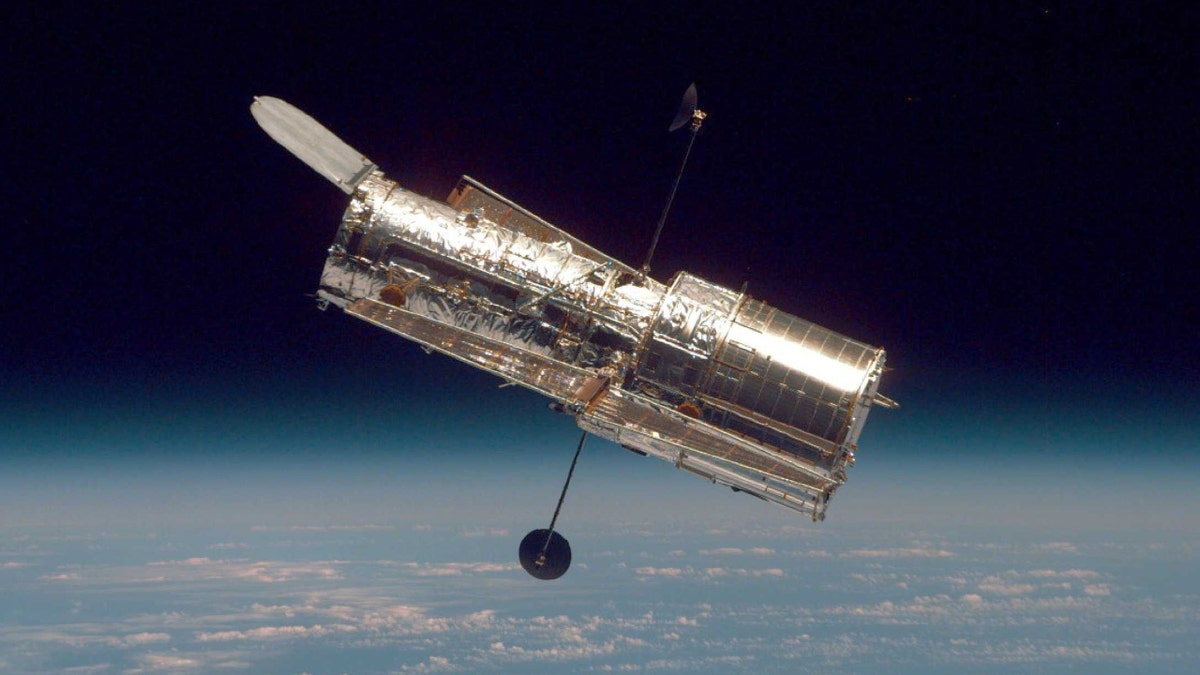Webb telescope images show ‘how people can work together’ to create something ‘truly amazing’: Principal investigator
Principal investigator of the NRI-CAM on the James Webb Space Telescope Marcia Rieke shares her ‘absolute joy’ at the success of the project and the opportunity the Webb telescope provides for future space exploration.
Astronomers using the Hubble Space Telescope and other observatories have discovered a pair of gravitationally-bound quasars inside two merging galaxies.
Quasars are active and luminous types of active galactic nuclei, and the European Space Agency explains that active galactic nuclei are extremely luminous galactic cores where gas and dust falling into a supermassive black hole emit electromagnetic radiation across the entire electromagnetic spectrum.
In a release, NASA explained that the bright quasars – powered by the black holes expelling fountains of energy – existed when the universe was just 3 billion years old.
"We don't see a lot of double quasars at this early time in the universe. And that's why this discovery is so exciting," lead study author and University of Illinois at Urbana-Champaign graduate student Yu-Ching Chen, said in a statement.
WEBB ASTRONOMERS DISCOVER EARLIEST GALAXIES CONFIRMED SO FAR IN NEW MILESTONE

This artist's concept shows the brilliant glare of two quasars residing in the cores of two galaxies that are in the chaotic process of merging. The gravitational tug-of-war between the two galaxies ignites a firestorm of star birth. Quasars are brilliant beacons of intense light from the centers of distant galaxies. They are powered by supermassive black holes voraciously feeding on infalling matter. This feeding frenzy unleashes a torrent of radiation that can outshine the collective light of billions of stars in the host galaxy. In a few tens of millions of years, the black holes and their galaxies will merge, and so will the quasar pair, forming an even more massive black hole. (Credits: NASA, ESA, Joseph Olmsted (STScI))
The research was published Wednesday in the journal Nature.
The agency noted that there is increasing evidence that large galaxies are built up through merging smaller systems, with pairs of supermassive black holes within the galaxies.
New observatories have allowed scientists to identify times when two quasars are active at the same time and are close enough that they will eventually merge.
The search presented here required the combined efforts of the Hubble Telescope, Hawaii's W.M. Keck Observatories and the International Gemini Observatory, New Mexico's NSF Karl G. Jansky Very Large Array and NASA's Chandra X-ray Observatory.

A Hubble Space Telescope photograph of a pair of quasars that existed when the universe was just 3 billion years old. They are embedded inside a pair of colliding galaxies. The quasars are separated by less than the size of a single galaxy. Quasars are powered by voracious, supermassive black holes blasting out ferocious fountains of energy as they engorge themselves on gas, dust, and anything else within their gravitational grasp. The black holes will eventually merge. (Credits: NASA, ESA, Yu-Ching Chen (UIUC), Hsiang-Chih Hwang (IAS), Nadia Zakamska (JHU), Yue Shen (UIUC))
NEIL DEGRASSE TYSON SAYS JAMES WEBB SPACE TELESCOPE IS WINDOW TO UNIVERSE 'NEVER BEFORE ACHIEVED'
The ESA Gaia space observatory also helped to identify this double quasar in the first place.
Hublle's sharp resolution shows that this is a genuine pair of supermassive black holes including a tidal feature from the merging of two galaxies, where gravity distorts the shape of the galaxies forming two tails of stars. In addition, Gaia is able to detect subtle "jiggle" that mimics an apparent change in stellar position from some the quasars it observes.

In this handout from the National Aeronautical Space Administration, the Hubble Space Telescope drifts through space in a picture taken from the Space Shuttle Discovery during Hubble's second servicing mission in 1997. (Photo by NASA via Getty Images)
The jiggle could be evidence of random fluctuations of light, according to the agency, as each member of the quasar pair varies in brightness and flashes like a railroad crossing signal – creating the illusion of jiggling.
The researchers also used the Keck telescope to make sure there is no lensing galaxy between Earth and the suspected double quasar, which no longer exists.
CLICK HERE TO GET THE FOX NEWS APP
"Because Hubble peers into the distant past, this double quasar no longer exists. Over the intervening 10 billion years, their host galaxies have likely settled into a giant elliptical galaxy, like the ones seen in the local universe today," said NASA. "And, the quasars have merged to become a gargantuan, supermassive black hole at its center."





















